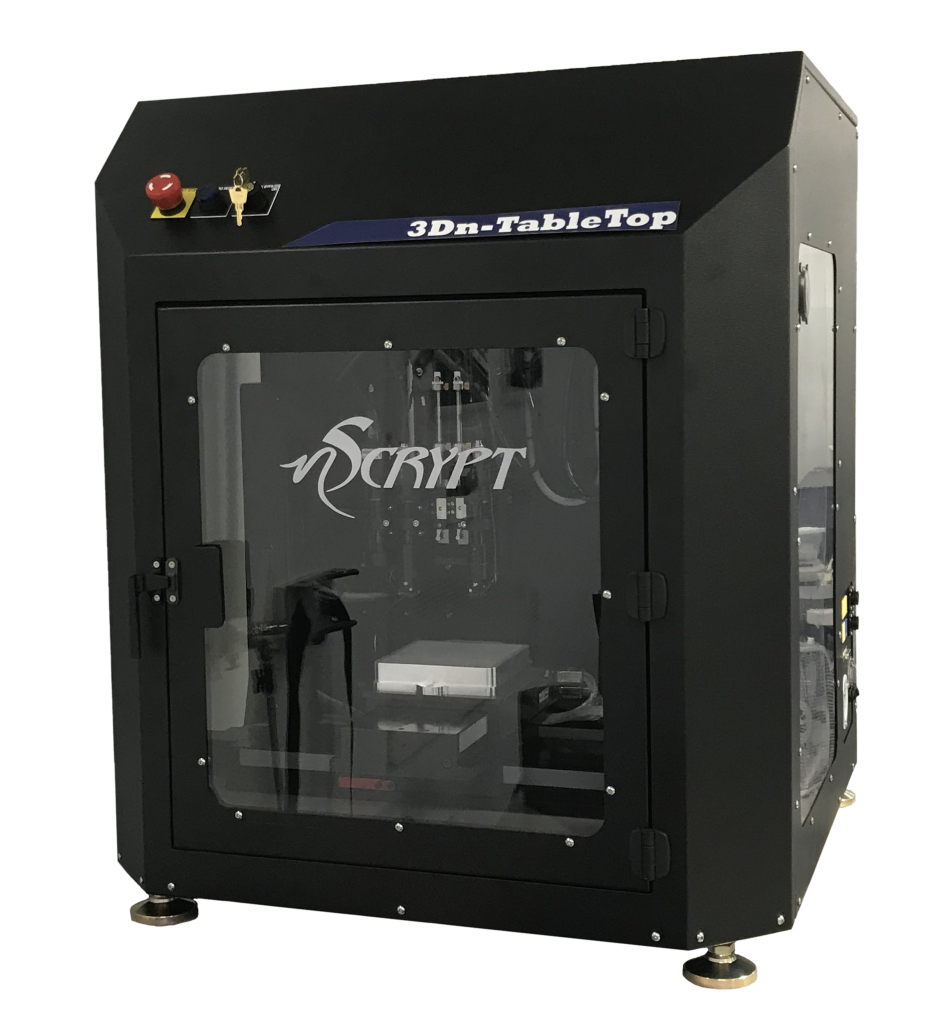Florida-based microdispensing specialist nScrypt has announced the issuance of its U.S. Patent No. 11,707,889, (‘889 patent) aptly named “Modular Mobile Direct Digital Manufacturing Systems.”
Within this patent lies a novel modular system tailored for direct digital manufacturing (DDM), ingeniously ensconced within a conventional shipping container. What distinguishes this system is its exceptional adaptability in managing a vast spectrum of materials, spanning from high and low-temperature thermoplastics to formidable substances such as metals and ceramics, says the company.
nScrypt’s CEO, Dr. Ken Church, said, “This shipping-containerized direct digital manufacturing system fulfills the promise of regional, local, and distributed manufacturing. It can respond in real time to changing demands, even autonomously if necessary. With a system covered by this patent, anyone can 3D manufacture almost anything, anywhere, anytime.”
Creating ease in direct digital manufacturing
DDM leverages 3D printing and additive manufacturing techniques for the production of final-use components. With the advancement of additive methods and materials, new prospects emerge for the creation of tailored manufactured parts. This evolution within the additive realm renders numerous projects feasible, overcoming the constraints of scale economics. It empowers innovators to address a multitude of high-value design, engineering, and manufacturing dilemmas.
Apart from its 3D printing prowess, the system includes essential 3D manufacturing components like an electronic component pick-and-place system and a bioreactor. Notably, through the seamless integration of nScrypt’s Factory in a Tool, this container-based system gains the capability to 3D manufacture complete and operational electronic devices.
Besides its multifaceted functionality, this modular system presents an array of advanced features. Its collapsible design significantly improves adaptability. In addition, it comes equipped with features such as electrostatic discharge flooring, integrated communication systems (WiFi, LiFi, or satellite), ultraviolet lighting, HVAC, solar power, multi-fuel power sources, secure blockchain-based file transactions, radio frequency shielding, and even a drone landing platform. These elements collectively establish it as an “innovative presence” in the manufacturing arena.

nScrypt’s contribution to the 3D printing sector
nScrypt’s research division, Sciperio, achieved a significant improvement in the performance of conformal 3D Printed Circuit Structures (PCSs) through its precision Factory in a Tool technology. The research aimed to enhance 3D-manufactured conductive traces and vias, increasing overall yield and performance adaptability. The team successfully 3D printed a circuit featuring conformal heating elements, applicable to wearable technology, electronics, and heating systems. Stacking conductive layers for traces resulted in a notable reduction in resistance, with a 92% decrease from layer 1 to layer 7. A via-filling technique using nScrypt’s SmartPump demonstrated effective results in connecting 49 out of 50 vias, with minimal resistance.
Additionally, Sciperio 3D printed CubeSats for the U.S. Space Force using the nScrypt Factory in a Tool (FiT). The Small Business Innovation Research Program (SBIR) Phase II project focused on the sophisticated manufacturing and assembly of 6U CubeSats. CubeSats, standardized to 10 cm x 10 cm x 10 cm, were produced with brief design-to-deployment times using nScrypt’s FiT, which integrated electrical, thermal, and other capabilities into the structure. This approach saved costs and reduced human involvement. The FiT employed multi-material deposition, milling, pick and place, and drilling to construct the CubeSats, embedding functionalities like solar sensors, solar panels, magnetometers, strain gauges, temperature sensors, and accelerometers into the walls or surfaces.
Who will win the 2023 3D Printing Industry Awards? Make your nominations now!
What does the future of 3D printing for the next ten years hold?
What engineering challenges will need to be tackled in the additive manufacturing sector in the coming decade?
To stay up to date with the latest 3D printing news, don’t forget to subscribe to the 3D Printing Industry newsletter or follow us on Twitter, or like our page on Facebook.
While you’re here, why not subscribe to our Youtube channel? Featuring discussion, debriefs, video shorts, and webinar replays.
Are you looking for a job in the additive manufacturing industry? Visit 3D Printing Jobs for a selection of roles in the industry.
Featured image shows nScrypt company logo. Image via nScrypt.



